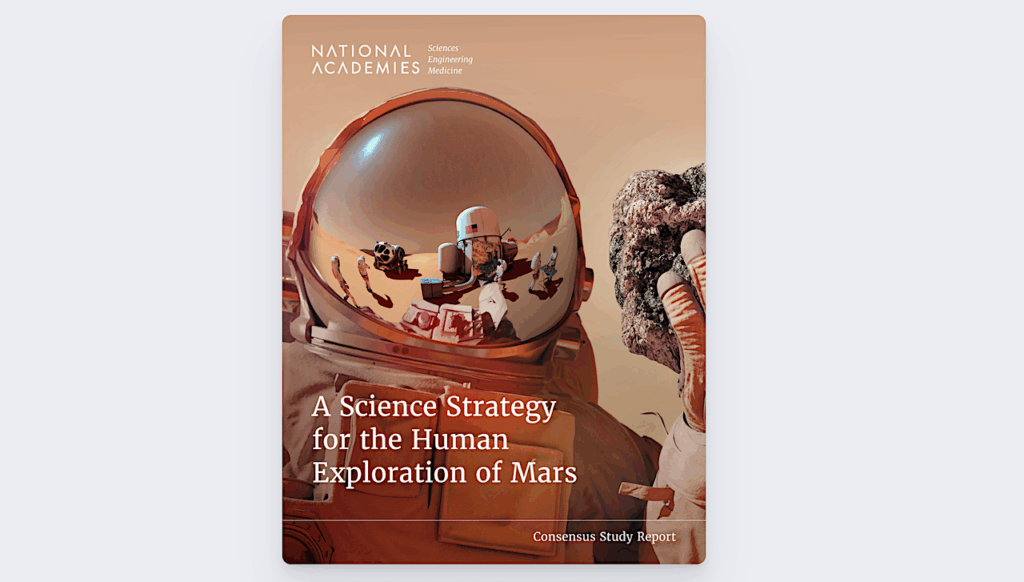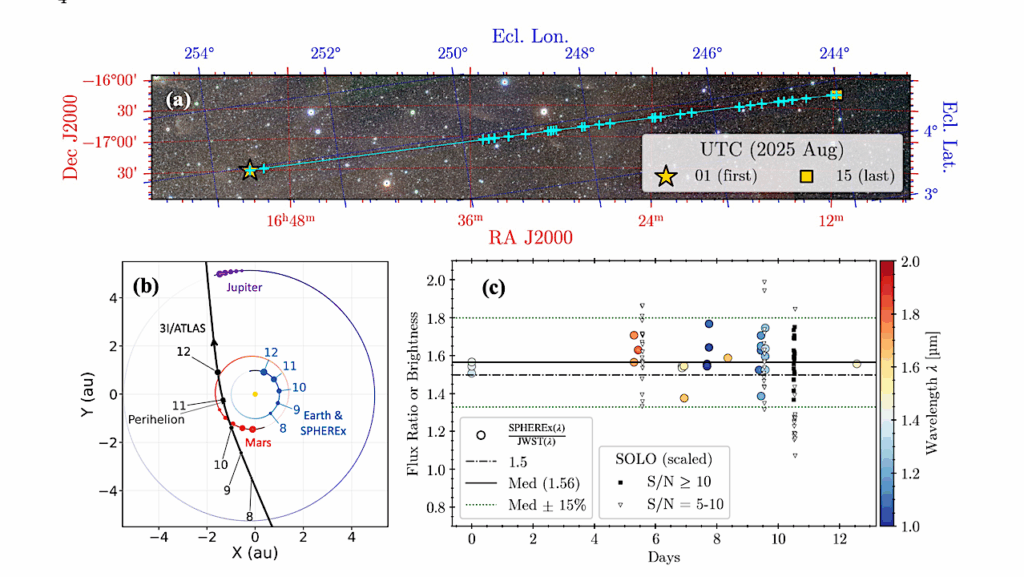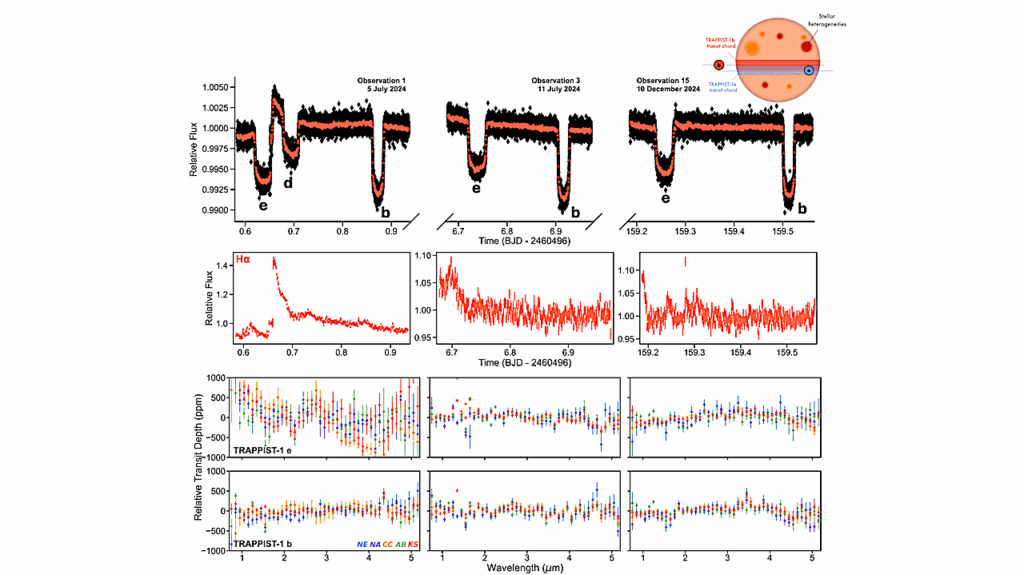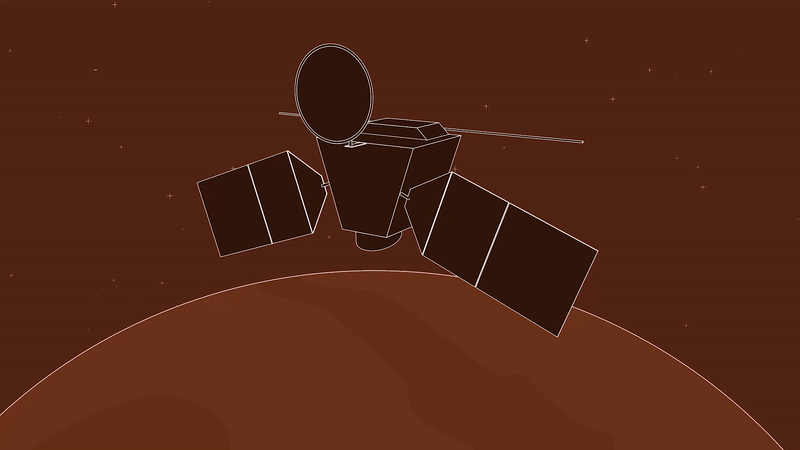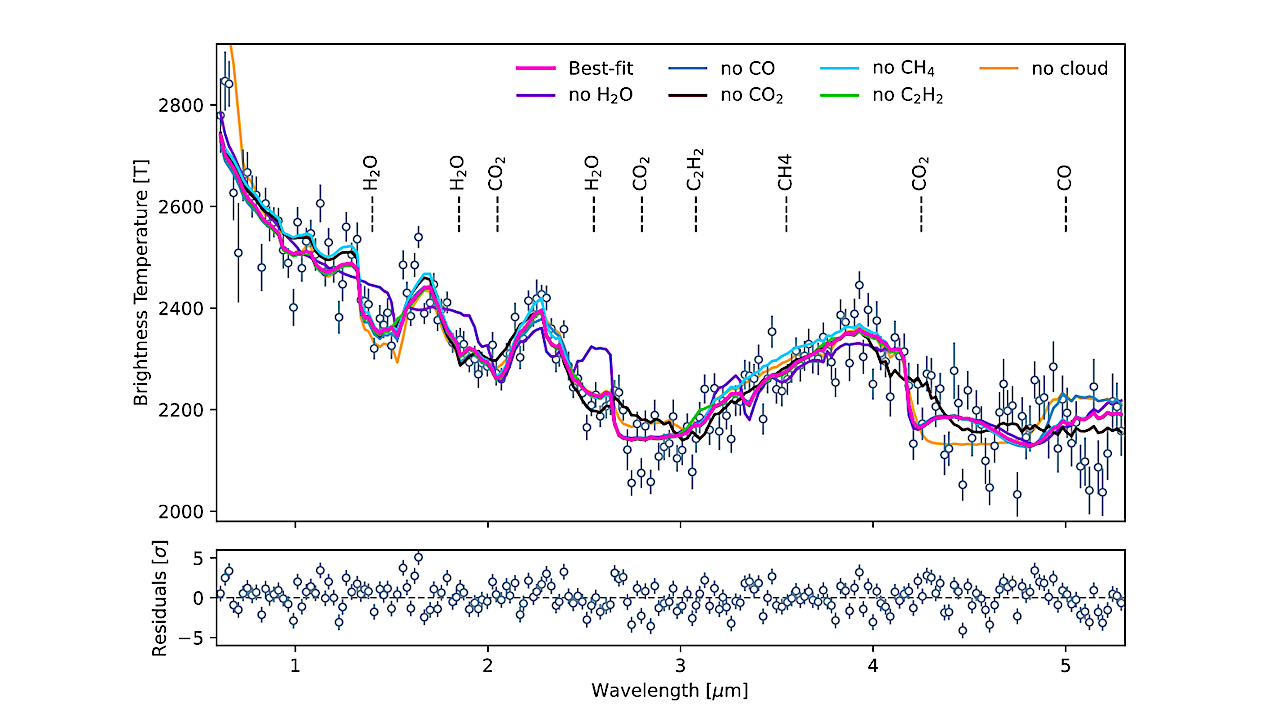Now Reading: Volatile-rich Evolution Of Molten Super-Earth L 98-59 d
-
01
Volatile-rich Evolution Of Molten Super-Earth L 98-59 d
Volatile-rich Evolution Of Molten Super-Earth L 98-59 d
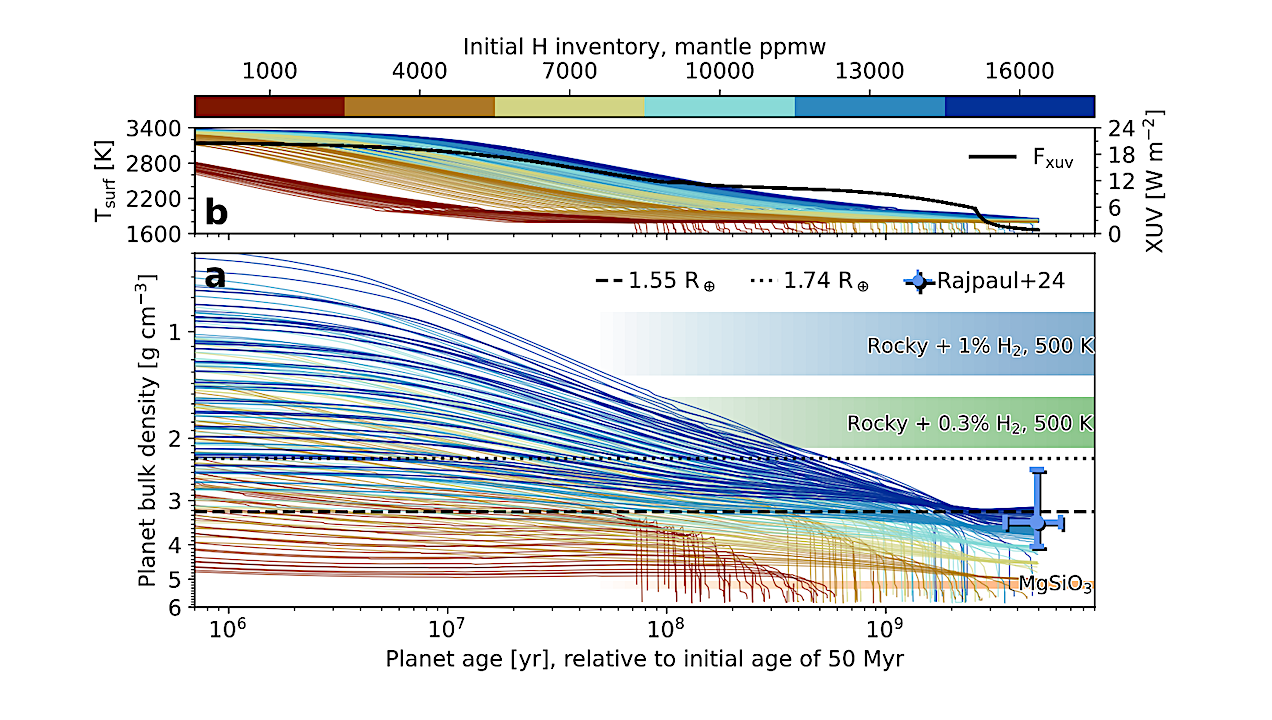
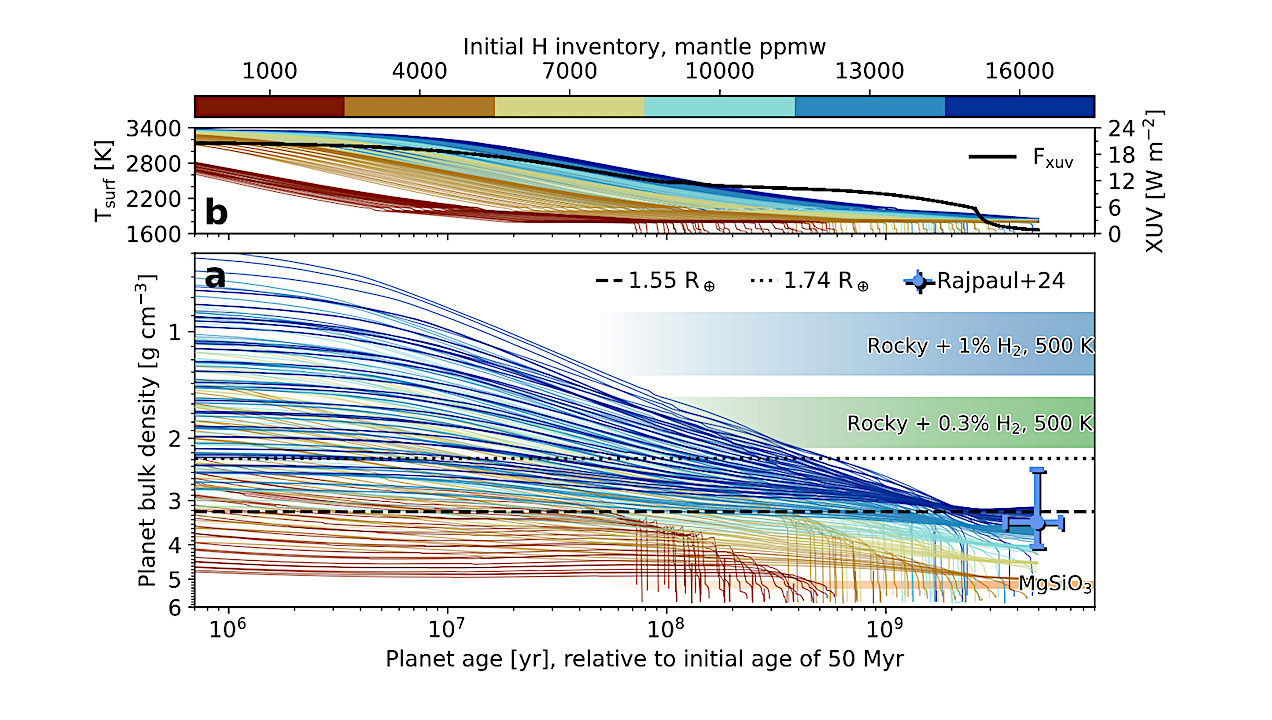
Modelled planetary bulk-density over time. The initial hydrogen inventory of each bulk-density evolution track is shown by the line colour. Blue/green shaded regions are reference densities for a planet of this mass (Zeng et al., 2019). Black dashed/dotted lines demarcate edges of the radius valley (at this planet mass) for low mass stars (Ho et al., 2024). The region ±1σ compatible with the estimated bulk-density of this planet is indicated by the blue errorbar (Rajpaul et al., 2024; Demangeon et al., 2021). Top panel: evolution of surface temperature (coloured) and stellar XUV energy flux (black). For visual clarity, this figure only shows cases with S/H=8. — astro-ph.EP
Small low-density exoplanets are sculpted by strong stellar irradiation but their origin is unknown.
Two competing scenarios are that they formed either with rocky interiors and H2-He atmospheres (‘gas-dwarfs’), or instead with bulk compositions dominated by H2O phases (‘water-worlds’). Observations of L 98-59 d have revealed its unusually low density and spectral characteristics, opening a window for disentangling its origin.
We constrain the possible range of evolutionary histories linking L 98-59 d’s birth conditions to these observations, using a coupled atmosphere-interior modelling framework. Observations are explained by a chemically-reducing mantle and early substantial (>1.8 mass%) sulfur and hydrogen content, inconsistent with both the gas-dwarf and water-world origin scenarios. Observed spectral features are explained by in-situ photochemical production of SO2 in an H2 background.
L 98-59 d’s interior comprises a permanent magma ocean, allowing long-term retention of volatiles within its interior over billions of years, consistent with surveyed Kepler Survey trends. Modelling of the `cosmic shoreline’ suggests that early volatile-metal budget is a determinant of atmospheric retention – here, we explicitly show that large initial budgets can explain JWST observations of some super-Earth planets (including DDT targets).
In breaking with the supposed gas-dwarf/water-world dichotomy, we reveal an evolutionary pathway defined by high-molar-mass atmospheres overlying magma oceans, and invite a more nuanced taxonomy of small exoplanets.
Harrison Nicholls, Tim Lichtenberg, Richard D. Chatterjee, Claire Marie Guimond, Emma Postolec, Raymond T. Pierrehumbert
Comments: In review. 4 figures and 4 pages in the main text
Subjects: Earth and Planetary Astrophysics (astro-ph.EP)
Cite as: arXiv:2507.02656 [astro-ph.EP] (or arXiv:2507.02656v1 [astro-ph.EP] for this version)
https://doi.org/10.48550/arXiv.2507.02656
Focus to learn more
Submission history
From: Harrison Nicholls
[v1] Thu, 3 Jul 2025 14:19:28 UTC (1,457 KB)
https://arxiv.org/abs/2507.02656
Astrobiology
Stay Informed With the Latest & Most Important News
Previous Post
Next Post
-
 012024 in Review: Highlights from NASA in Silicon Valley
012024 in Review: Highlights from NASA in Silicon Valley -
 02Panasonic Leica Summilux DG 15mm f/1.7 ASPH review
02Panasonic Leica Summilux DG 15mm f/1.7 ASPH review -
 03How New NASA, India Earth Satellite NISAR Will See Earth
03How New NASA, India Earth Satellite NISAR Will See Earth -
 04And Thus Begins A New Year For Life On Earth
04And Thus Begins A New Year For Life On Earth -
 05Astronomy Activation Ambassadors: A New Era
05Astronomy Activation Ambassadors: A New Era -
 06From Polymerization-Enabled Folding and Assembly to Chemical Evolution: Key Processes for Emergence of Functional Polymers in the Origin of Life
06From Polymerization-Enabled Folding and Assembly to Chemical Evolution: Key Processes for Emergence of Functional Polymers in the Origin of Life -
07SpaceX launch surge helps set new global launch record in 2024













